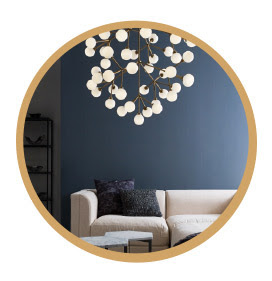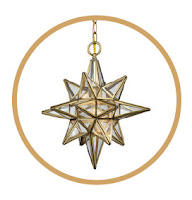Lighting
Trends for 2000
By Amanda Hawkins, Residential Lighting
Consultant
As 2019 draws to a close, we are looking forward to the
coming year and all the newness it brings. 2020 will offer new trends in
lighting and tweaks on styles we’re already used to seeing.
Natural materials and elements
Many manufacturers are getting in touch with nature with
their new releases. They’re utilizing recycled glass, rattan, grass, wood,
rough crystal, and woven wicker on chandeliers, pendants, and lamps. The result
is a fixture that has texture and visual interest.
For a touch of whimsy, some manufacturers are including
natural shapes such as leaves, feathers, butterflies, flowers, and even birds.
Chandeliers and sconces take on a sculptural feel with multi-sized elements,
layered and stacked, giving the impression of functional art.
Black Finish
Recently there’s been a surge in fixtures being offered in
black; but this coming season it will be more prevalent. Black is being used in
everything from modern styles to more traditional. Black goes with most
interiors and can be used as an accent or as a statement.
We’ve seen a lot of gold popping up and also a lot of gold
and black fixtures. Gold isn’t going anywhere, but it will be taking a back seat,
becoming more of a highlight.
Black and Opaque Shades
Traditionally, lamp shades are offered in lighter colors
to allow light to filter through; but this year we will see black and opaque
metal shades that do more statement-making than diffusing. Adding a lamp with a
black or gold shade adds contrast and a touch of drama to any room.
Geometric Shapes
Geometric shapes will be everywhere in lighting. The
chandeliers and pendants harken back to the 60s and 70s, but with a modern
twist. The look is clean and polished, with interesting shapes and layers,
adding a fun flair to your home.
LED bulbs and smart home technology
Lighting trends aren’t limited to hanging fixtures and
lamps. LED bulbs, smart bulbs, and smart home technology are trending and rapidly
gaining acceptance and popularity. LED bulbs are quickly replacing old
incandescent bulbs because of their energy efficiency and long life span. LEDs
are also better for the environment because they use less energy, create less
waste, and contain no toxic chemicals that need to be carefully discarded. LEDs
are even being built into fixtures allowing for smaller and more compact styles.
Smart home systems are growing in popularity because they’re
easy to use and give homeowners control over their lights, locks, thermostat,
and more from their phones. To learn more about LED lighting, see our previous
blog post, “What’s the Big Deal About LED Lights?”
Find Something You Love
The new decade brings many changes and a lot of exciting
trends in lighting. Whether it’s a chandelier, pendant, lamp, or bulb, you’ll find
a lighting trend that will suit your tastes and freshen up your home.
Amanda Hawkins is a
residential lighting consultant in Dominion Electric Supply’s Chantilly
showroom. She majored in Apparel Design in college, and minored in Creative
Writing. When she’s not selling chandeliers and writing or editing blogs, Amanda
enjoys reading, dancing, and laughing at animal memes.



























